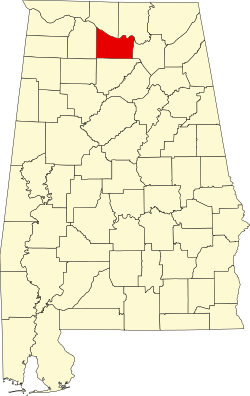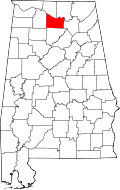2010 census
As of the census of 2010, there were 119,490 people, 47,030 households, and 33,135 families living in the county. The population density was 206.4 inhabitants per square mile (79.7 inhabitants/km2). There were 51,193 housing units at an average density of 88 units per square mile (34 units/km2). The racial makeup of the county was 79.8% White, 11.9% Black or African American, 0.9% Native American, 0.6% Asian, 0.1% Pacific Islander, 4.8% from other races, and 2.0% from two or more races. 7.7% of the population were Hispanic or Latino of any race. [14] Of the 47,030 households 30.0% had children under the age of 18 living with them, 52.9% were married couples living together, 12.9% had a female householder with no husband present, and 29.5% were non-families. 25.9% of households were one person and 9.8% were one person aged 65 or older. The average household size was 2.50 and the average family size was 2.99.
The age distribution was 24.0% under the age of 18, 8.4% from 18 to 24, 26.1% from 25 to 44, 27.5% from 45 to 64, and 14.1% 65 or older. The median age was 39 years. For every 100 females, there were 97.2 males. For every 100 females age 18 and over, there were 100.4 males.
The median household income was $44,349 and the median family income was $54,653. Males had a median income of $43,455 versus $29,270 for females. The per capita income for the county was $23,090. About 10.9% of families and 15.0% of the population were below the poverty line, including 21.9% of those under age 18 and 12.0% of those age 65 or over.
2000 census
As of the census of 2000, there were 111,064 people, 43,602 households, and 31,437 families living in the county. The population density was 191 inhabitants per square mile (74 inhabitants/km2). There were 47,388 housing units at an average density of 81 units per square mile (31 units/km2). The racial makeup of the county was 85.07% White, 11.24% Black or African American, 0.67% Native American, 0.45% Asian, 0.07% Pacific Islander, 1.25% from other races, and 1.25% from two or more races. 3.28% of the population were Hispanic or Latino of any race. [15] According to the census [16] of 2000, the largest ancestry groups in Morgan County were English 60.1%, Scots-Irish 12.71%, and African 11.24%
Of the 43,602 households 33.50% had children under the age of 18 living with them, 57.40% were married couples living together, 11.20% had a female householder with no husband present, and 27.90% were non-families. 24.80% of households were one person and 9.40% were one person aged 65 or older. The average household size was 2.51 and the average family size was 2.99.
The age distribution was 25.30% under the age of 18, 8.40% from 18 to 24, 30.10% from 25 to 44, 23.80% from 45 to 64, and 12.30% 65 or older. The median age was 37 years. For every 100 females, there were 96.20 males. For every 100 females age 18 and over, there were 93.50 males.
The median household income was $37,803 and the median family income was $45,827. Males had a median income of $35,759 versus $21,885 for females. The per capita income for the county was $19,223. About 9.70% of families and 12.30% of the population were below the poverty line, including 15.90% of those under age 18 and 12.80% of those age 65 or over.




